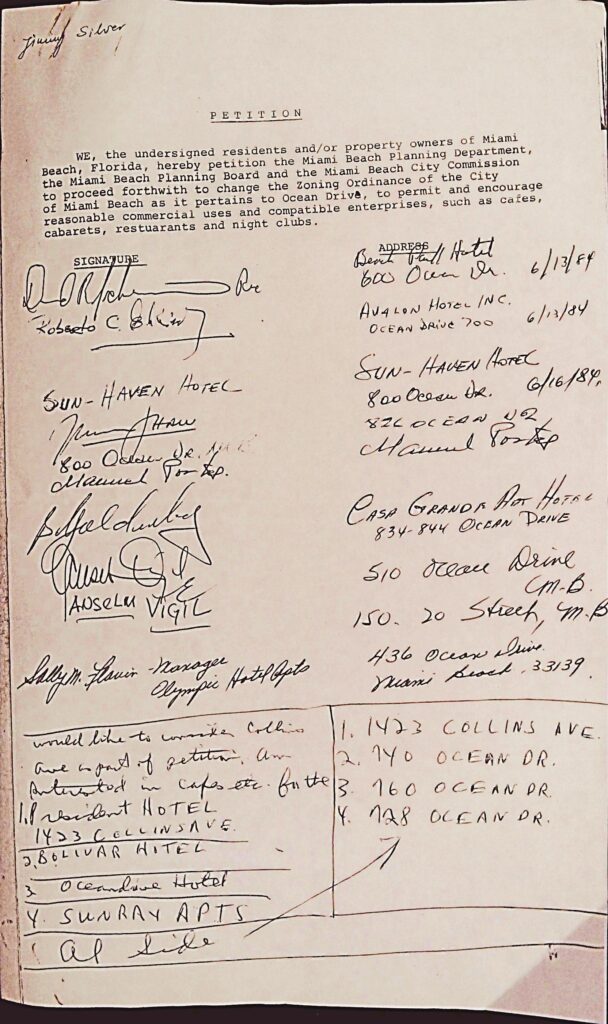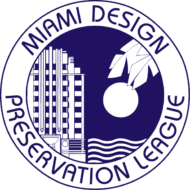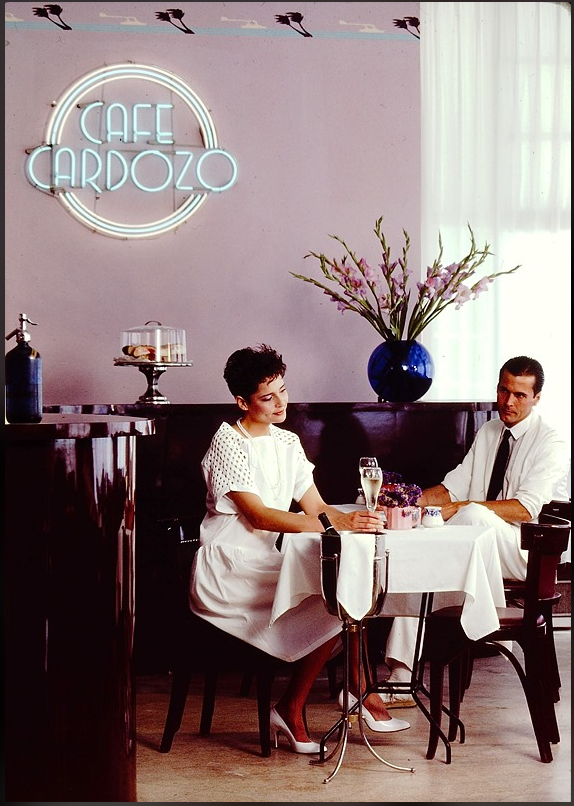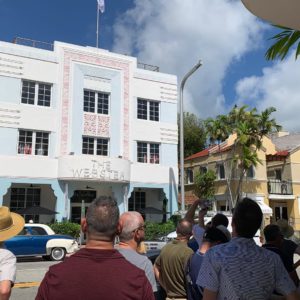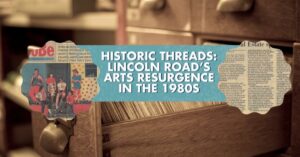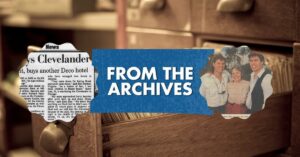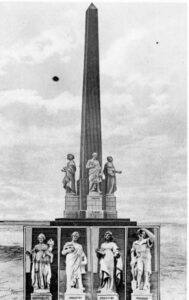In the seventies, the porch at the Cardozo Hotel at 1300 Ocean Drive had no more than a row of aluminum chairs, with equal numbers of senior citizens who lived in the hotel.
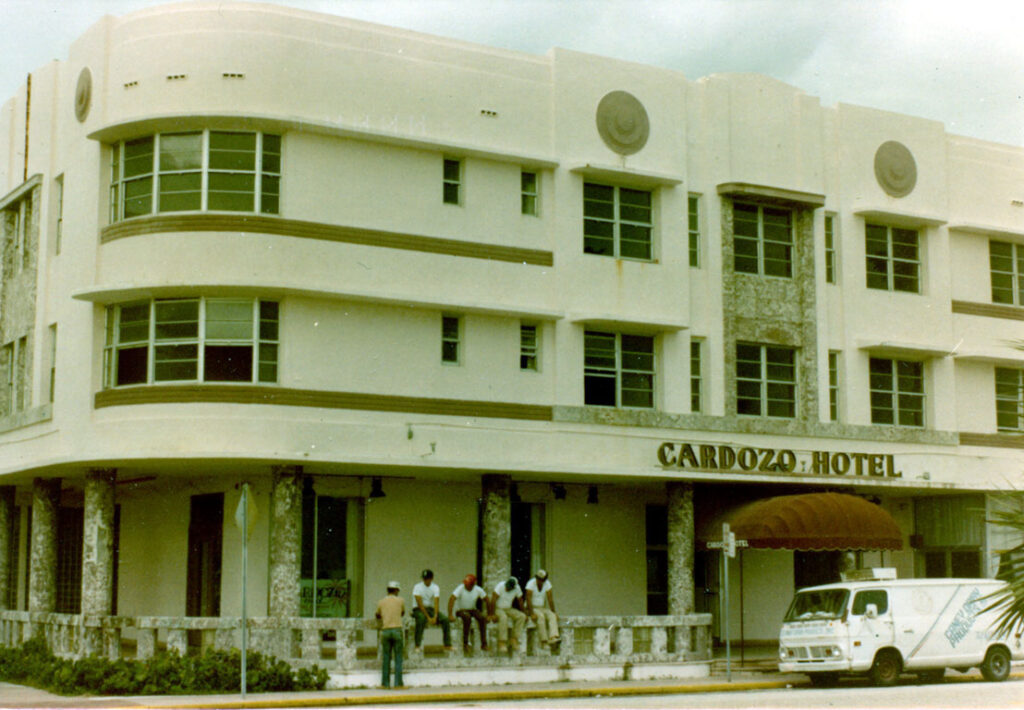
On May 18th, 1981, the hotel opened up the “Cafe Cardozo”, which was the old coffee shop newly renovated with Deco curved counters featuring red, white and lavendar decor and outdoor seating. The cafe, with its new neon sign, represented a return to the Deco District’s cafe society that was around 40 years prior. From the beginning it was not the service which drew the crowd. Nor was it the food, since the kitchen was way too small to allow much beyond microwaving simple foods or salads. The imported beer was good, and so was the espresso and cappuccino, when the machine was working. However, if one was very observant they would notice the increasing amount of artists, gallery people, writers, poets, dancers, photographers, cinematographers, architects, professors, editors, art directors, film producers and an occasional politician coming to the area. The back of the menu stated that the new cafe is, “the focal point in the restoration of the Cardozo Hotel, the official pilot project of the new Art Deco District…”
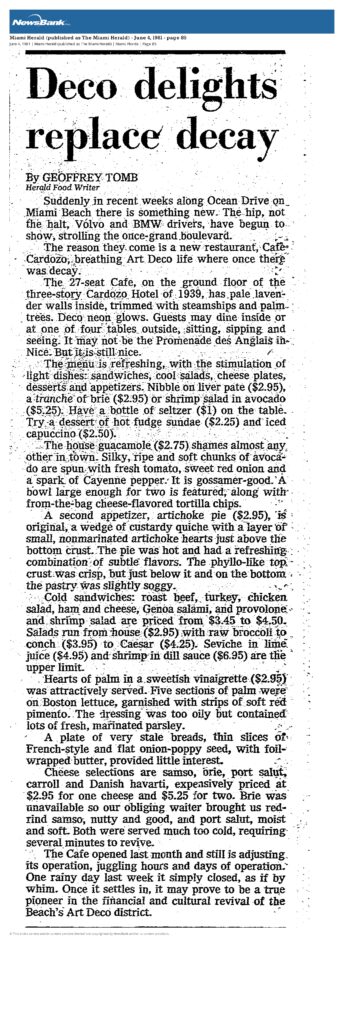
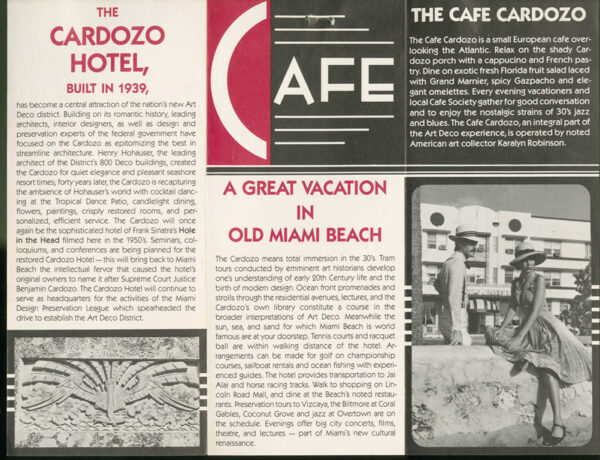
By the early eighties, Miami Design Preservation League was located on the first floor of the Cardozo at 1300 Ocean Drive, along with the gift shop located in the glass block room in the lobby. Young people would come by sporadically to volunteer at Barbara Baer Capitman’s non-profit organization and work in the gift shop. Additionally, artists and writers and other creative types in need of reasonable rents slowly began to move into the rooms upstairs. Woody Vondracek was one of the first. He came to Miami a few years before to escape assembly-line life in Detroit. He decided to teach himself to be an artist and fell in love with Art Deco. Working with the Miami Design Preservation League, he designed many of their Art Deco Weekend posters. It was against this backdrop, in his $300-a-month oceanfront room at the Cardozo Hotel, where Vondracek produced the majority of his work. Vondracek created about forty such images depicting the Art Deco architecture and events of Miami Beach. Inside the hotel, in the lobby, hung the poster Woody designed for the early days of Cardozo’s rebirth. Across the stylized deco images were five words: “Come back to the sea.”
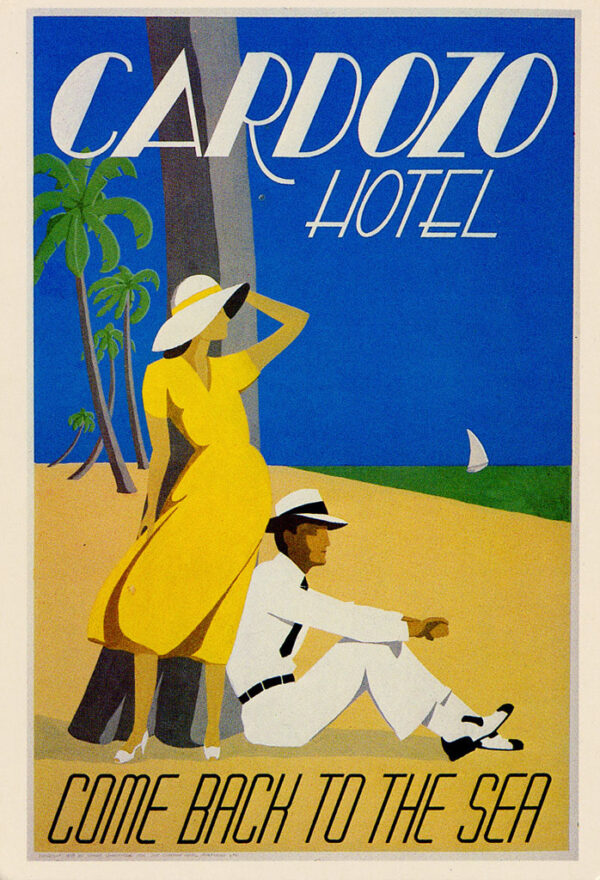
At the south end of the porch there still was a collection of those familiar aluminum chairs lined up, occupied exclusively by the old people who currently lived in the hotel. Despite the fact that the young locals spent as much time on the porch as the “porch sitters,” the regulars and the old people generally did not interact. There was an invisible line for those seniors where they never crossed over to the tables around the corner. It seemed the “porch rats” didn’t make any effort to draw out the old people either. The seniors knew that suddenly the atmosphere on Ocean Drive identified them as the wrong sort for the new Cardozo. One of them said, “They’re trying to push the old people into the ocean.”
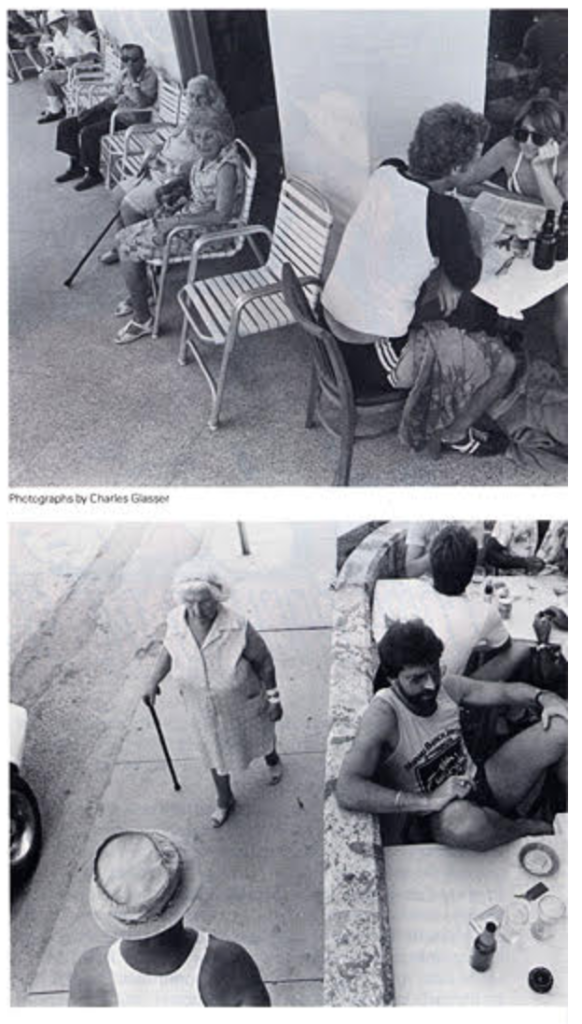
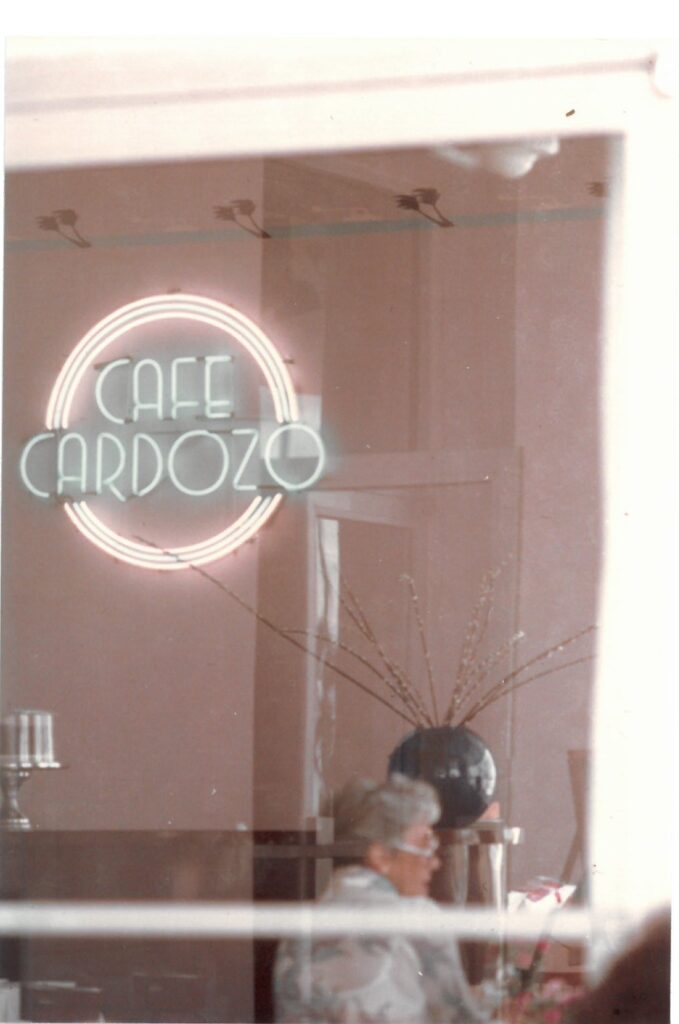
From a June 1982, Miami Herald article written by Andrew Captiman entitled, “Art Deco’s Potential”, he writes, “Art Deco defines its target market as 25-40 year old urban professionals encompassing any vocation that has a design or visual arts component…design, journalism, advertising, television, film and fashion…these people tend to be the trendsetters…it is exactly this crowd that is drawn to our Cafe Cardozo, bringing folks to Miami Beach who haven’t visited in years. From the cafe’s success, we extrapolate to a time when Ocean Drive features cafes and bistros on every hotel porch…”
One cafe customer fondly remembers, “I worked for Carlos Alvez back in the 80s when the beach was still full of retirees and not much happening really, the beach was dead. Carlos was contracted to install one of his signature mosaic designs in the Cardozo Hotel when his studio was at the South Florida Art Center on Lincoln Road. Around that pivotal moment on the beach, Tony Goldman just considered widening the sidewalks on the West side of Ocean Drive. So much talking about the beach and taking accolades by people who really never invested in real estate or did anything….but those locals living and working on the beach in the 1980s saw exactly what happened to make the beach pop. A collective group worked together to coalesce and attract the mainlanders to spend their dollars on South Beach when it was a ghetto. Barbara Capitman & Leonard Horowitz painted the old architecture some pastel colors and revitalized areas before the artists and early adaptors began adding flavor and nightlife to the hood. In my opinion those were the best years on the beach and the most widely regarded and reminisced.” Another patron remembered, “There was a dude named Hershel Weingrod that used to bang out Gershwin on a beat up piano on the Cardozo porch. There was also a server named Don that always wore green eyeliner”.
Paul Silverthorne, the award winning Art Deco muralist and designer, who lived on Espanola Way in the 1940’s with a group of new emerging artists including Earl LaPan, said “all the new hotels had a coffee shop, lunch counter, a bookie and gambling on the roof tops, but no sit down restaurants”.
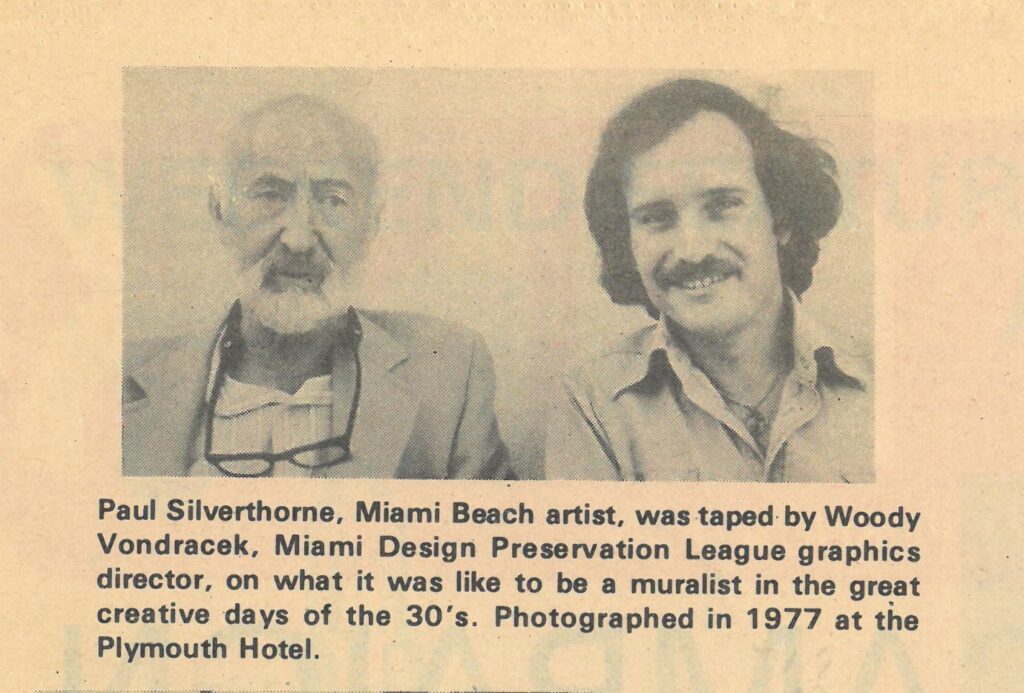
As predicted by Andrew Capitman, in June of 1984, hotel and property owners in the District got together with a petition to change the zoning ordinance on Ocean Drive to permit and encourage reasonable commercial uses such as cabarets, restaurants & night clubs. The petition was supported and signed by many hotel owners all along Ocean Drive. In the mid-80s, the Capitmans raised $6 million to restore all six of their deco hotels over the span of the next few years with new cafes, bars and restaurants. Subsequently, a restaurant was opened in the Cardozo Hotel and a year later one was opened in the Carlyle Hotel, marking the trend for the future of commerce along Ocean Drive’s Historic District.
